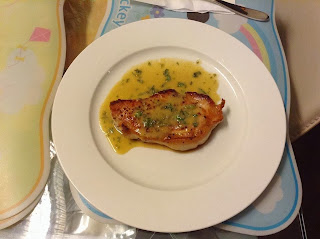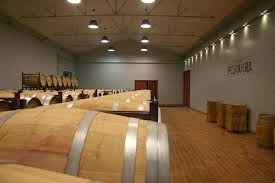Chateau
Citran has a history dated back to the Middle Ages, but the chateau only went back
to the 18th century, from the old fortress that was built in the 13th
century. The estate was acquired in 1832 by the Clauzel family, but the
vineyards contracted from 90 ha to a mere 4 ha. In 1945 it was purchased by the
Miailhe brothers, Edouard and Louis, who were brokers and negociants.
They
held onto it for several decades, when the estate was passed to Louis’s
daughter, who sold it to the Japanese Societe Touko Haus in 1987, seeing
committed investment. Later it was Groupe Taillan, led by Jacques Merlaut,
taking over in 1997, who already had owned properties in the region including
Ferriere, Gruaud-Larose, Chasse-Spleen, La Gurgue and Haut-Bages-Liberal. It
was Celine Villars that holds the reins.
The
vineyards are located in Avensen, west of Margaux and covering 410 hectares. Two
plots which both entitled to Haut-Medoc appellation, totaling 90 hectares, are adjacent
to the chateau and near Avensen. Terroir is typically gravel, with some sand,
marl and chalky clay. It is planted with 58% Cabernet Sauvignon and 42% Merlot,
with average vine age of 25 years.
There is
plan to deforest some adjacent high land to grow more Cabernet. The vineyards
are ploughed between in rows, with manual harvesting. Fermentation is carried
out in stainless steel with temperature control, with three week cuvaison, followed
by one year in barrels which are 40% new. The wine is then fined using egg
white before bottling, with the grand vin being Chateau Citran of 25000 cases,
and the second wine Moulins de Citran of about 16000 cases.
I have
recently tasted the 2003 vintage and below is my tasting note:
Appearance
Bright and clear, this wine is of medium ruby
color and with legs.
Nose
Clean,
the nose shows medium (+) intensity aromas of red fruit such as redcurrant and
plum, black fruit of cassis and dark cherries, under ripeness notes of green
bell pepper, oak notes of cedar, maturity notes of vegetal. The wine is
developing.
Palate
Dry with
medium acidity, medium tannin of smooth and silky texture, the wine has medium
alcohol and is of medium body with medium intensity flavors of black fruit of
dark cherries, oak notes of cedar, red fruit of plum. The wine has a medium (-)
finish.
Conclusion
Acceptable
quality Haut-Medoc with a fairly intense nose of reasonable complexity,
however, the wine has some rather unripe characters associated, on both nose
and palate, and the palate is particularly simple with also quite a
disappointing finish. Coming from a good vintage of 2003, it is surprising
about the unripeness. Ready to drink now and not intend for further ageing. 








































